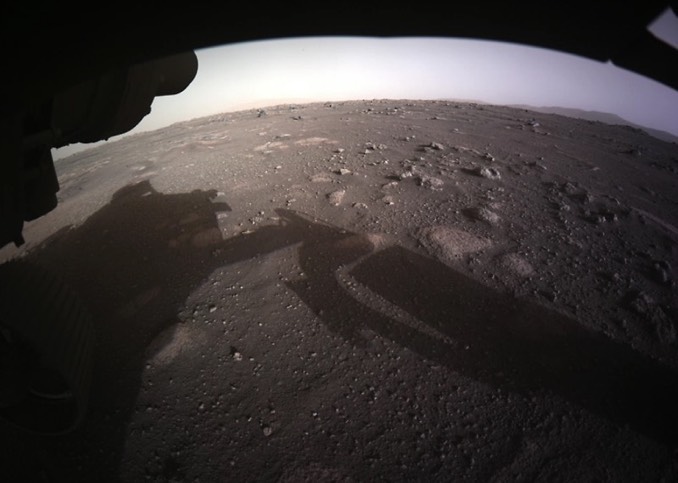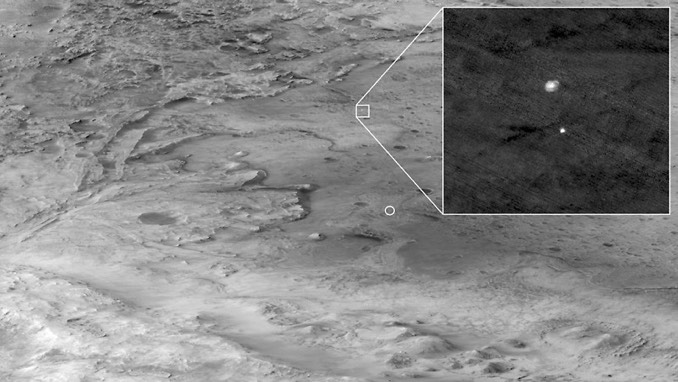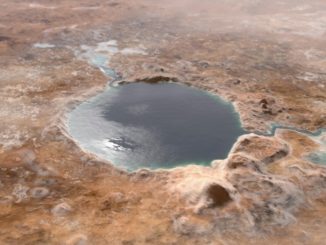
Following on the heels of the United Arab Emirates Hope orbiter and China’s Tianwen-1 spacecraft, NASA’s $2.4 billion Perseverance rover plunged into the thin atmosphere of Mars on 18 February and executed a hair-raising but flawless descent to landing in Jezero Crater.
Safely secured inside a flying saucer-shaped aeroshell, the spacecraft endured temperatures of some 1,480 degrees Celsius (2,700 F) as it blazed through the upper atmosphere, deployed a 22-metre-wide (70.5 feet) parachute and then fell free for a rocket-powered “sky crane” descent to touchdown.
The rover’s flight computer, using new hazard-avoidance technology, was targeting landing in a roughly circular “footprint” measuring 7.7-by-6.6 kilometres (4.8 by 4.1 miles). It actually landed near the center of that target, about 2 kilometres (1.2 miles) beyond a broad delta formation formed by a river that once flowed into the crater more than 3.5 billion years ago.

“I’m happy to say the rover is doing great and is healthy on the surface of Mars,” said Pauline Hwang, assistant strategic mission manager at NASA’s Jet Propulsion Laboratory in Pasadena, California.
The rover’s initial checkout went smoothly and the day after landing, engineers released a dramatic photo showing the rover from above as it was being lowered to the surface by its rocket-powered descent vehicle.
“You can see the dust kicked up by the (jetpack’s) engines, we’re probably about two metres or so above the surface of Mars,” said Chief Engineer Adam Steltzner.
“You can see the mechanical bridles that held the rover underneath the descent stage, three straight lines heading down to the top deck, and then the curly electrical umbilical that is taking all of the electrical signals from the descent stage down to the computer, inside the belly of the rover.”

He promised more “fantastic images” in the days ahead as Perseverance’s cameras take panoramic images of the rover’s surroundings to help scientists map out areas they want to visit as they search for signs of past microbial life in the ancient lakebed and delta deposits.
Perseverance is equipped with a complex sample collection system designed to load promising rocks and soil into small, airtight tubes that will be deposited, or cached, on the surface.
NASA and the European Space Agency plan to send another rover to retrieve the samples, fire them into orbit using a small rocket and ferry them back to Earth aboard another spacecraft for detailed laboratory analysis.



